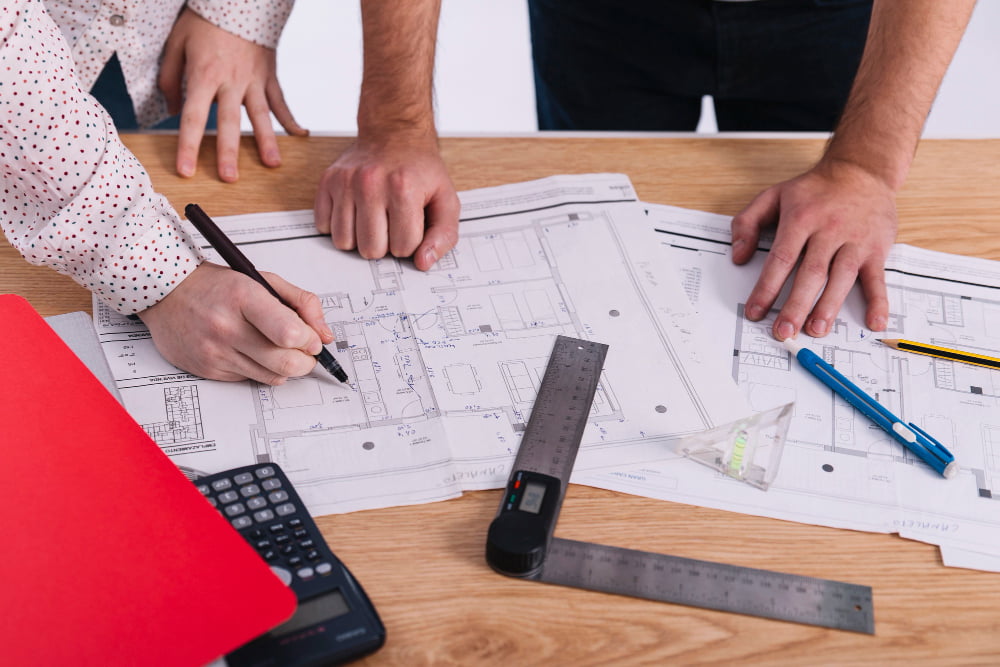Last updated on
Starting a home renovation project is like setting off on an adventure. It’s filled with excitement about transforming your living space into something new and uniquely yours. However, like any adventure, it comes with its set of challenges. The key to navigating through these challenges and ensuring a smooth journey lies in thorough preparation and planning. This article is your comprehensive guide, offering a checklist to navigate your home renovation project.
Setting Goals and Budgeting for Your Renovation

Before starting your renovation, clearly define your goals. Are you aiming to refresh your home’s look, enhance its functionality, or increase its value? Knowing what you want to achieve will guide all your future decisions.
After setting your goals, focus on budgeting. Budgeting not only involves estimating the costs associated with your desired renovations but also setting aside a realistic amount you’re willing to spend. It’s wise to include a buffer in your budget for unexpected expenses, as they’re common in renovation projects. Remember, thorough research and careful planning at this stage can save you from stress and financial strain later on.
Hiring Professionals
Not all renovation tasks require professional help, but for those that do, hiring the right professionals can make all the difference. When the project involves complex work, like structural changes or installations that require specific expertise, it’s best to leave it to the experts. For instance, if you’re considering installing a new roof, hiring a reputable roof installation company ensures the job is done right, safeguarding your home against future issues.
Finding and vetting the right contractors is equally important. Start by asking friends and family for recommendations and checking online reviews. Once you have a list of potential contractors, interview them and ask for references and examples of their previous work. This step is crucial to ensure that the contractor not only understands your vision but is also someone you can trust to bring it to life.
A solid contract is your safety net when working with contractors. It should clearly outline the scope of work, timelines, payment schedules, and how to handle any changes or unforeseen issues that may arise during the project. A detailed contract not only protects you but also sets clear expectations for everyone involved, helping to ensure the renovation process is smooth and transparent.
Design and Planning Phase

The design and planning phase is where your renovation starts to take shape. Good design is about more than just aesthetics; it’s about making sure the changes meet your needs and fit within your budget. Whether you’re working with a designer or planning the layout yourself, it’s important to keep your original goals in mind and remain flexible. Sometimes, the best solution isn’t the first one that comes to mind.
Navigating permits and approvals is another critical step in this phase. Depending on the scope of your renovation, you may need to obtain permits from your local government. This ensures that your project complies with building codes and regulations, which is essential for both your safety and the future resale value of your home. While dealing with bureaucracy can be daunting, remember that it’s all part of ensuring your renovation is done right and lasts for years to come.
Preparing for Renovation
Getting your home ready for the changes ahead is just as important as the renovation itself. Begin by securing the worksite, which might be your entire home or just a part of it. This step ensures safety and efficiency. Remove any furniture or belongings from the area to prevent damage and make the space easily accessible for the workers. If you’re living in the house during the renovation, plan how you’ll adjust your daily routines around the construction zones.
Setting a realistic timeline with your contractors is crucial. Discuss and agree on a start and completion date, and understand that some flexibility may be needed due to unforeseen circumstances. Having a clear timeline helps manage expectations and can reduce stress for both you and the professionals working in your home.
During the Renovation
Communication is key during the renovation process. Establish a regular check-in routine with your contractor to discuss the project’s progress and any issues that may have arisen. This doesn’t mean watching over their shoulder every step of the way but having a consistent update schedule to ensure the project stays on track.
Monitoring the progress of the renovation allows you to catch any deviations from the plan early on. If you notice something isn’t going as expected, discuss it with your contractor immediately. They are there to work with you and ensure you’re satisfied with the outcome.
Delays and issues are almost inevitable in any renovation project, but don’t let them derail you. Be prepared to make decisions on how to address unexpected problems. Your contractor should offer solutions, but ultimately, the decision on how to proceed will be yours. Stay calm and focused on finding solutions rather than dwelling on the problem.
Post-renovation
Once the dust settles and the work is done, it’s time for the final inspections and walk-throughs. This is when you ensure everything has been completed according to your agreement and satisfaction. Don’t hesitate to point out any issues or unfinished tasks to your contractor. It’s better to address these things now rather than later.
Gathering all warranties and documentation for the work completed and the materials used is also crucial. This paperwork can be invaluable if you encounter problems down the line or when you decide to sell your home. It serves as proof of the updates and improvements made, which can add value to your property.
The Takeaway
A home renovation requires careful planning, patience, and a willingness to tackle the challenges that come your way. From setting clear goals and budgeting effectively to hiring the right professionals and managing the renovation process, every step helps you build the home of your dreams.
Finally, keep in mind that while this guide provides a comprehensive overview, every home renovation is unique. Be prepared to adapt and make decisions that best suit your specific situation. With the right approach and mindset, you can transform your home into a space that meets your needs, reflects your style, and brings you joy for years to come.
Recap:




